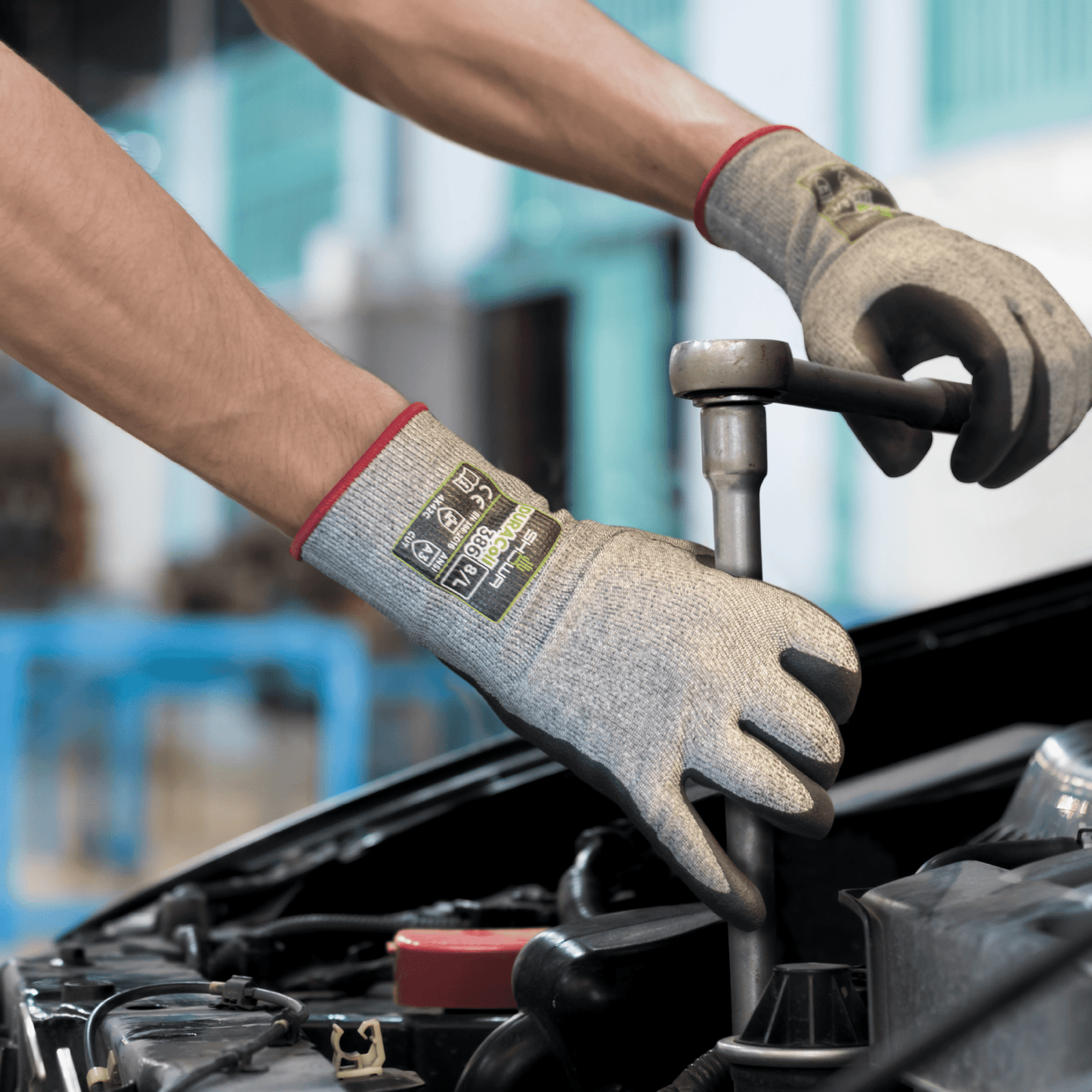
Hand protection is essential in any workplace, from labs to construction sites. Potential hazards in the workplace that employees could be exposed to without proper hand protection include skin absorption of toxic or harmful substances, chemical burns, thermal burns, electrical dangers, bruises, abrasions, cuts, punctures, fractures and amputations.
Protective equipment is designed to mitigate and reduce these risks. PPE comes in many forms, such as gloves, finger guards, and arm coverings. Gloves are the most commonly seen within any workplace.
What are the different hand protection standards?
There are multiple standards that PPE is held to, below are some commonly held standards in hand protection.
Resistance To Chemical Permeation – EN 16523-1:2015
This measures the permeation resistance that the PPE material provides when exposed to hazardous chemicals at a molecular level and under continuous contact. From this, manufacturers then determine the ‘breakthrough time’ – the time passed before the hazardous liquid would potentially contact you or your employees’ skin. This is something to look for if your industry works with chemicals, or dangerous materials, including waste products.
Mechanical Risks – EN388:2016
This is used to determine the physically protective characteristics of hand protection, and this is tested in multiple aspects such as abrasion, cut, tear, puncture and impact resistance. This is an essential standard for any PPE hand protection that will be in heavy use.
Resistance to chemical degradation – EN 374-4:2013
Degradation is measured by examining the change in one or more properties of a protective glove material after 1 hour of contact with a chemical. This can present itself through delaminating, discolouration, hardening, softening, dimensional change, loss of tensile strength, or other factors. This standard is best aimed at those who work in chemical processing but is also applicable elsewhere.
Penetration resistance – EN374-2:2014
During an air leak test, the glove’s interior is pressurised with air, and the surface is checked for holes. Whereas during a water leak test, the glove is filled with water and examined for the appearance of water droplets on the outside surface after a set time. This is a widespread standard and can be applied to any industry.
Protection against micro-organisms – EN ISO 374-5:2016
The glove must pass the resistance test according to standard EN 374-2: 2014, as discussed above, to claim resistance to bacteria and fungi. Protection that meets this standard is suitable for those working in environments handling waste or potentially contaminated products.
Heat-related risks – EN374-2:2014
This testing can include; resistance to flammability, contact heat, convective heat, radiant heat, small splashes of molten metal and resistance to large splashes of molten metal. They will then be graded accordingly. This is suitable for ‘hot shop’ workers such as welders, electronics manufacturers, and metal workers, such as blacksmiths or jewellery manufacturers.
Cold-related risks – EN511:2006
Similarly to ‘Heat related risk’, this standard requires a range of tests such as resistance to climatic or industrial cold transmitted by convection, climatic or industrial cold transmitted by contact and impermeability to water. This is ideal for employees who work in all weather conditions and must maintain dexterity or those working in climate-controlled areas such as meat processing.
Anti-static properties – EN 1149-5:2008
In this standard, gloves and hand protection are tested for their surface resistivity level to indicate the capacity of the protection to disperse accumulated static electricity discharges on the user’s hand. This is useful for employees who operate heavy machinery, work in high risk, high voltage environments, or use electronics in adverse conditions.


